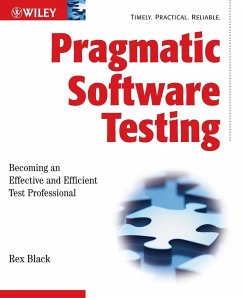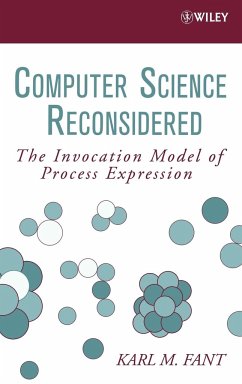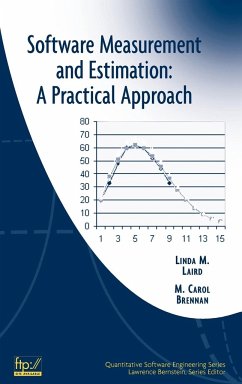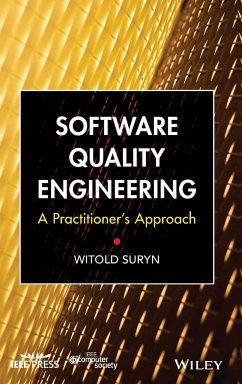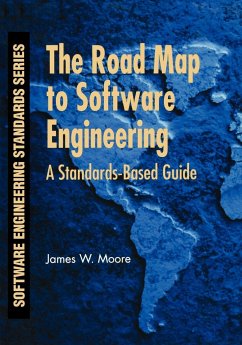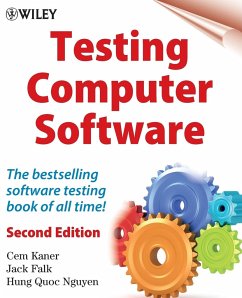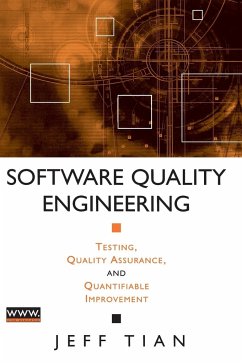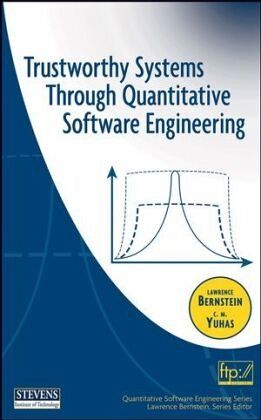
Trustworthy Systems Through Quantitative Software Engineering

PAYBACK Punkte
80 °P sammeln!
Trustworthy Systems Through Quantitative Software Engineering provides quantitative analysis for software engineering practices in order to build reliable software products. Readers learn from discussions of real on-the-job experiences how important it is to plan, measure, and assess each stage of development. Illuminated with case studies, the book concentrates on problem analysis. By emphasizing the importance of fitting the software engineering structure to the problem, readers learn to produce products that are on schedule, within budget, and satisfactory to the customer. The book also stresses the concepts of simplification, trustworthiness, risk assessment, and architecture.
A benchmark text on software development and quantitative software engineering
"We all trust software. All too frequently, this trust is misplaced. Larry Bernstein has created and applied quantitative techniques to develop trustworthy software systems. He and C. M. Yuhas have organized this quantitative experience into a book of great value to make software trustworthy for all of us."
-Barry Boehm
Trustworthy Systems Through Quantitative Software Engineering proposes a novel, reliability-driven software engineering approach, and discusses human factors in software engineering and how these affect team dynamics. This practical approach gives software engineering students and professionals a solid foundation in problem analysis, allowing them to meet customers' changing needs by tailoring their projects to meet specific challenges, and complete projects on schedule and within budget.
Specifically, it helps developers identify customer requirements, develop software designs, manage a software development team, and evaluate software products to customer specifications. Students learn "magic numbers of software engineering," rules of thumb that show how to simplify architecture, design, and implementation.
Case histories and exercises clearly present successful software engineers' experiences and illustrate potential problems, results, and trade-offs. Also featuring an accompanying Web site with additional and related material, Trustworthy Systems Through Quantitative Software Engineering is a hands-on, project-oriented resource for upper-level software and computer science students, engineers, professional developers, managers, and professionals involved in software engineering projects.
"We all trust software. All too frequently, this trust is misplaced. Larry Bernstein has created and applied quantitative techniques to develop trustworthy software systems. He and C. M. Yuhas have organized this quantitative experience into a book of great value to make software trustworthy for all of us."
-Barry Boehm
Trustworthy Systems Through Quantitative Software Engineering proposes a novel, reliability-driven software engineering approach, and discusses human factors in software engineering and how these affect team dynamics. This practical approach gives software engineering students and professionals a solid foundation in problem analysis, allowing them to meet customers' changing needs by tailoring their projects to meet specific challenges, and complete projects on schedule and within budget.
Specifically, it helps developers identify customer requirements, develop software designs, manage a software development team, and evaluate software products to customer specifications. Students learn "magic numbers of software engineering," rules of thumb that show how to simplify architecture, design, and implementation.
Case histories and exercises clearly present successful software engineers' experiences and illustrate potential problems, results, and trade-offs. Also featuring an accompanying Web site with additional and related material, Trustworthy Systems Through Quantitative Software Engineering is a hands-on, project-oriented resource for upper-level software and computer science students, engineers, professional developers, managers, and professionals involved in software engineering projects.



